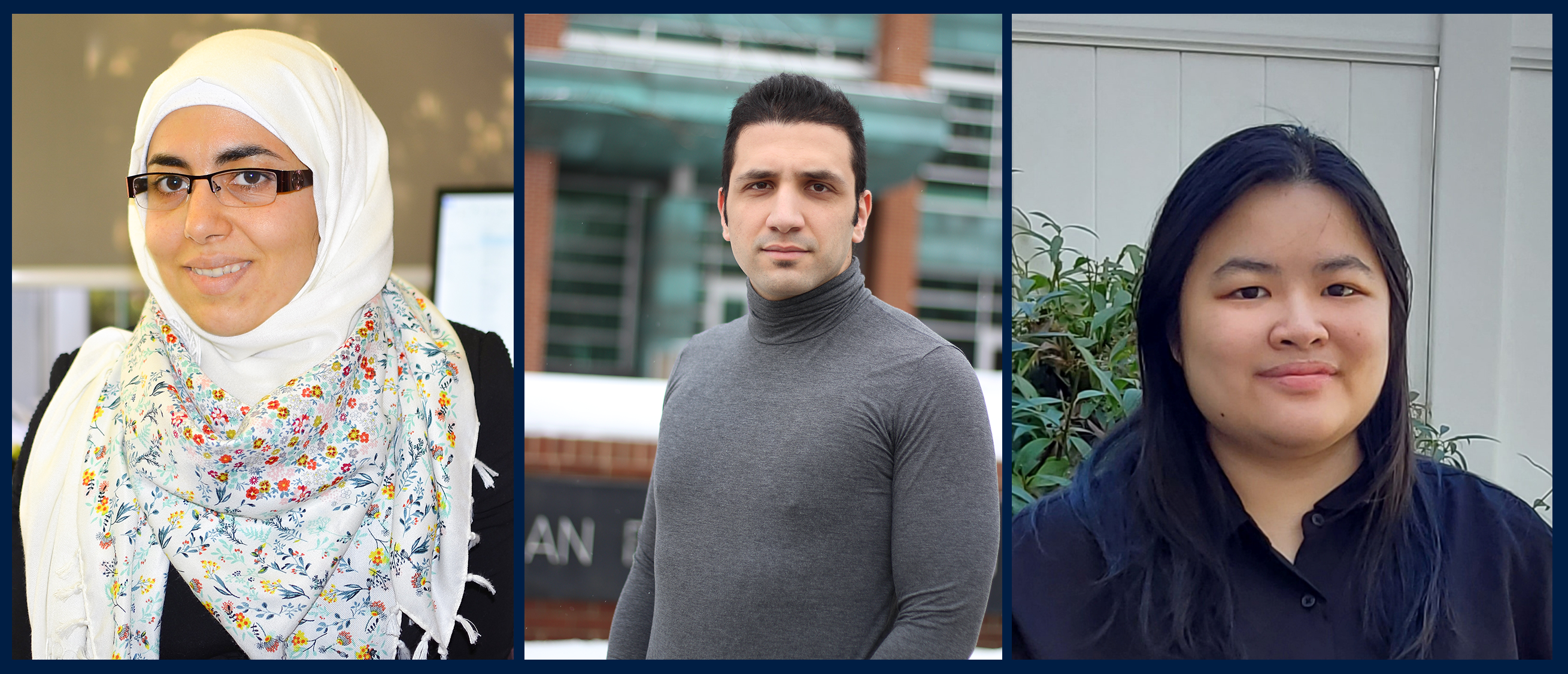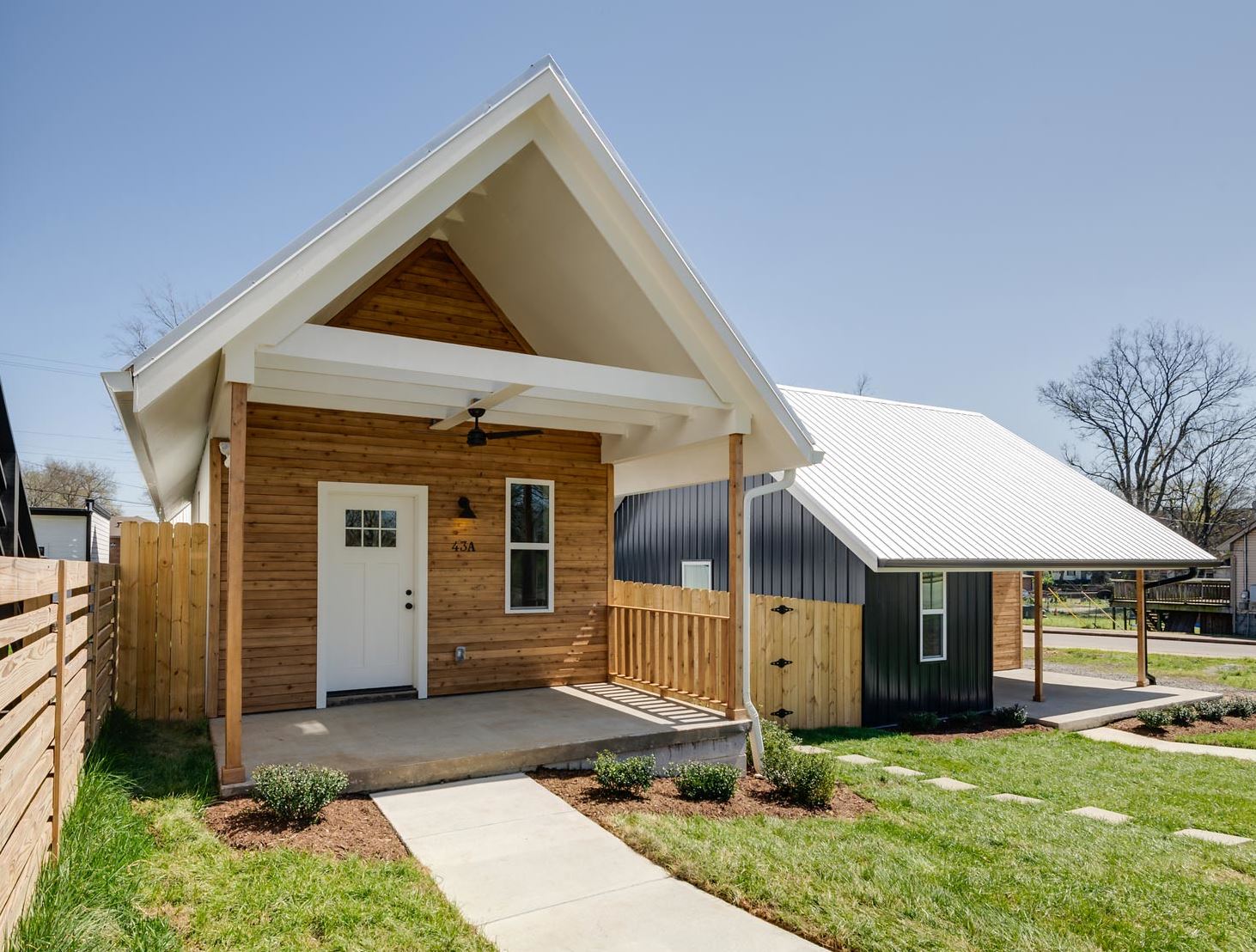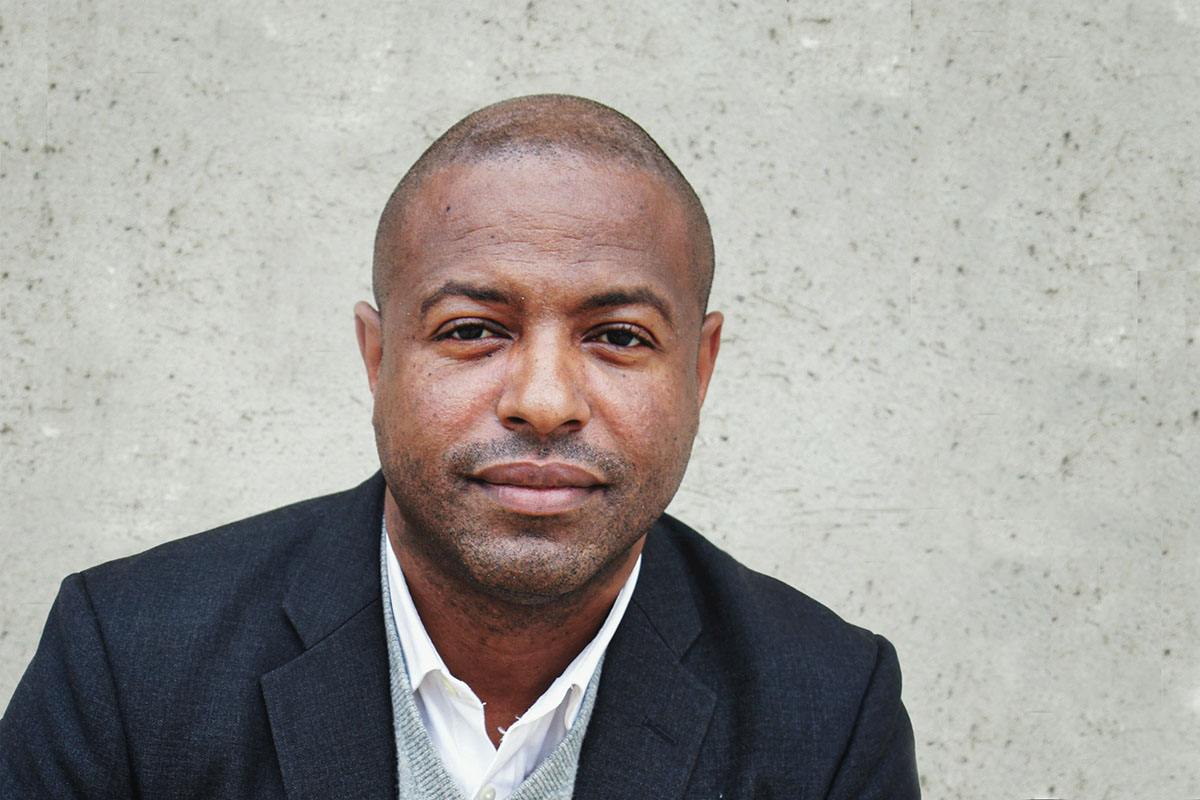Pennsylvania State University
Architecture graduate students earn Engineering for Change Research Fellowships
UNIVERSTY PARK, Pa. — Dima Abu-Aridah, Ali Ghazvinian and Tiffanie Leung, all graduate students in the Stuckeman School’s Department of Architecture, have been named 2021 Engineering for Change Research Fellows in the habitat sector.
Designed to prepare early career professionals to solve local as well as global challenges, the American Society of Mechanical Engineers (ASME) E4C Fellowship program provides a platform for the next generation of technical professionals to “reach their fullest potential” and advance the United Nations’ Sustainable Development Goals.
This year the Autodesk Foundation, which is the philanthropic arm of Autodesk, Inc., partnered with ASME to offer even more emerging professionals the opportunity to apply their technical research to solve some of the world’s most pressing social and environment issues. As such, nearly 650 applications from interested candidates in 80 countries were submitted for the program with 50 students and young professionals from 24 countries ultimately selected for the 2021 cohort.
An architect and urban planner from Jordan, Abu-Aridah is a doctoral student whose current research focuses on the planning and informal transformation of the built environment in refugee camps, with a focus on the context of her home country.
“My motivation to pursue [an E4C Fellowship] comes from studying and working in Jordan, a country that hosts a large number of refugees from the Middle East,” said Abu-Aridah. “In Jordan, there is a vital need to improve the development sectors, including the education, health care and housing sectors, so that those sectors can work to serve both the country’s citizens as well as the refugees.”
A native of Tehran, Iran, Ghazvinian is focusing his doctoral studies on computational design and is working on converting mycelium-based bio-composites to the architectural context in an interdisciplinary area. A researcher in the Form and Matter Lab (ForMatLab) within the Stuckeman Center for Design Computing, Ghazvinian is attempting to define a comprehensive framework for preparing nature-based materials to be used as an alternative for the traditional masonry materials in an affordable, repeatable and more sustainable way.
“I found the E4C Fellowship program as a fantastic opportunity to broaden and deepen my perspective for finding solutions to global programs,” he said. “Learning from other people and their experiments within similar scenarios will help me in my journey, both academically and professionally.”
Leung just completed her first year in the master of science in architecture graduate program and has centered her research around material improvements to earthbag construction systems and bag-making processes that can enhance builder empowerment.
“Motivated by the humanitarian application of earthbag construction in disaster recovery, I applied to E4C to gain some insight into the processes and strategies used in engineering for global development, which I want to apply to my own research,” said Leung. “This fellowship is also the perfect chance for me to connect with people outside of architecture and foster interdisciplinary relationships that could have an impact in my career in the future.”
Stuckeman School alumnus Julio Diarte, who graduated from Penn State earlier this month with his doctorate in architecture, was part of the E4C Fellowship cohort in 2020.
E4C is a nonprofit organization made up of engineers, technologists, designers, social entrepreneurs, nongovernmental organizations and community advocates who are committed to improving the quality of life in communities around the world by facilitating the development of affordable, local appropriate and sustainable solutions to the most pressing social challenges. More about the fellowship program can be found at https://www.engineeringforchange.org/e4c-fellowship/.
Pennsylvania State University
Penn State architecture students and faculty contribute to Pan-African exhibition in France
UNIVERSITY PARK, Pa. — Penn State faculty members DK Osseo-Asare, assistant professor of architecture and engineering design, and Yasmine Abbas, assistant teaching professor of architecture and engineering design, have designed an architectural space within the “UFA – Université des Futurs Africains [University of African Futures]” exhibition at the Le Lieu Unique, a national center for contemporary culture in Nantes, France.
The exhibition, which opened on April 9 and runs through Aug. 29, is part of a year-long “Africa 2020” event that was launched as a laboratory for production and the spread of knowledge and ideas generated out of African cultural heritage and knowledge systems. At the opening of the Africa 2020 season, which was delayed by a year due to the COVID-19 pandemic, French President Emmanuel Macron noted that both its “multidisciplinary nature – visual arts, performing arts, cinema, literature, science, technology, entrepreneurship, gastronomy, fashion, design, architecture” and its inclusion of 54 African countries make the Africa 2020 event “unprecedented.”
Curated by Oulimata Gueye, the UFA exhibition explores 21st-century relationships between technology, science, ecology, care, and the emancipatory potential of pan-African paradigms of computational knowledge. The projects on display engage the continued relevance in art and design of the term “HistoFuturist,” which is defined by African American science-fiction writer Octavia E. Butler as “someone who looks forward without turning his or her back on the past, combining an interest in the human factor and in technology.” The work also reflects the concept of “active utopia,” a term advanced by Senegalese economist Felwine Sarr, whereby African actors create their “own metaphors of the future” based on indigenous models.
Osseo-Asare and Abbas’ featured work is the latest evolution of their open-source ”Fufuzela” design research, experimental adaptive bamboo structures engineered to function at the intersection of architecture and furniture while integrating biology with environmental design and engineering. These kit building systems leverage a novel, bamboo-composite, steel joint mechanism to enable low-cost construction of dynamic modular spaces that allow for a hybrid or “blended” experience of physical and digital realities. At Le Lieu Unique, the designed space is titled “Fufuzela – Lieu Utile,” which translates as “the useful space,” and serves as a central makerspace-type installation within the exhibition that can be used as a gathering place for research, meetings, collaborative work, and performances.
The research has been supported by the Museum of Modern Art, Penn State Materials Research Institute’s Covestro “Materials Matter at the Human Level” humanitarian materials initiative, and the Collaborative Design Research Center in the Stuckeman School. Central to the project is the approach of Osseo-Asare and Abbas to connect Penn State researchers in the Humanitarian Materials Lab (HuMatLab) and the Spatial Æffect Lab jointly with high-end fabricators in the United States and Europe, as well as grassroots artisanal makers and engineering technicians in Ghana and West Africa, to work on materials-driven, collaborative design research.
A dozen Penn State graduate and undergraduate students from both the Stuckeman School and the School of Engineering Design, Technology and Professional Programs (SEDTAPP), have participated in the Fufuzela collaborative design research project, including Lizz Andrzejewski, Paniz Farrokhsiar, Sam Rubenstein, Nicholas Fudali, Bryan Ray and Danielle Vickers. In addition, the work of current master of science in architecture students Tiffanie Leung and Mahan Motalebi in the past year garnered them credit in the UFA exhibition.
Leung, who worked with Osseo-Asare to study the “bone” morphology and joint mechanics and maintained the open-source repository throughout the co-creation process, reflects that “ … one can see how the Fufuzela can begin to emerge as an organism capable of development and revision beyond the lab.”
Motalebi, who assisted Abbas with computing the threaded “skin” of the structure, said, “One thing that I like about [the] Fufuzela is the way it gathers people from … different parts of the world with people working on it from different locations … I see [the] Fufuzela as an object and a structure that provides the space for more human entanglement, and I appreciate the opportunity to be a part of that.”
Since France was under lockdown due to a COVID-19 surge in early spring, Osseo-Asare and Abbas could not install the exhibit themselves; however, students from Ecole des Beaux-arts de Nantes St. Nazaire have worked with the pair remotely to make their design come to fruition.
According to Osseo-Asare, both the Stuckeman School Shop and the Digital Fabrication Lab were “invaluable resources to support building physical mockups and using computer-controlled rapid prototyping equipment to iteratively test design components.” The Fufuzela design research project is part of the Material Matters (MM) research cluster in the Department of Architecture.
In parallel to the exhibition in France, several additional modules of the Fufuzela have been constructed in Ghana by members of the Agbogbloshie Makerspace Platform (AMP) Makers Collective in collaboration with a local partner, the ANO Institute of Arts and Knowledge. The modules are slated to travel to eight regions in Ghana for codesign, knowledge exchange, and curation workshops conducted as the third cycle of ANO‘s Mobile Museum project that Osseo-Asare collaborated to pilot in 2015.
Founded by renowned writer, filmmaker, historian, and cultural theorist Nana Oforiatta Ayim, ANO is currently leading a complete re-establishment of Ghana’s museum sector on behalf of the Government of Ghana. In January 2021, Osseo-Asare authored a chapter titled “Architecture” for the Ghana Museums Report, as part of the President’s Committee on Museums and Monuments, titled “Fufuzela: Futuring the Pan-African Museum.”
The AMP, founded by Osseo-Asare and Abbas, is a transnational project that helps bolster maker ecosystems in Africa by encouraging grassroots makers, students, and young professionals to collaborate to reutilize recycled materials. The project has garnered numerous awards, most recently winning the Smart Cities Urban Innovation Award for Citizen Engagement in the Le Monde 2020 World Urban Innovation Challenge. The project won the Rockefeller Foundation Centennial Innovation Challenge 2013, a 2017 SEED Award for Public Interest Design from Design Corps, and a Design Award Commendation, Social Impact, from the American Institute of Architects-Austin 2020 Design Awards.
Osseo-Asare is a co-founding principal of Low Design Office, an architecture and integrative design studio based in Austin, Texas, and Tema, Ghana, that explores the links between sustainability, technology, and geopolitics. The firm was recently named a winner of the Architectural League of New York’s Emerging Voices 21 competition.
At Penn State, Osseo-Asare directs the HuMatLab, which triangulates the Stuckeman School, SEDTAPP in the College of Engineering and the Materials Research Institute. The lab serves as a key driver of the University’s Alliance for Education, Science, Engineering and Design with Africa (AESEDA), a cross-university initiative to leverage teaching, research, and service to better the lives of those living in Africa and the diaspora. Osseo-Asare’s research spans design innovation, open-source urbanism, digital fabrication, and architecture robots.
Abbas, who is also affiliated with the College of Arts and Architecture’s Center for Pedagogy in Art and Design (C-PAD), researches the computational design of ambiances and the making of environments for living across contemporary conditions of expanded physical, digital and mental mobilities. The Spatial Æffect Lab, which she founded, advances atmospheres design as a general approach to parametric placemaking. The two modules of Fufuzela on display as part of the UFA exhibition investigate the optical effects of structural color in threaded spatial envelopes.
Auburn University
Rural Studio Enjoys Exciting Developments Through Front Porch Initiative
Read more: https://aub.ie/Rural_FrontPorch
University of Virginia
UVA Selects Malo A. Hutson as Dean of the School of Architecture
The University of Virginia announced today that Malo A. Hutson has been appointed the dean of the School of Architecture, effective July 1, 2021.
Hutson is currently a tenured professor and director of the Urban Planning Ph.D. Program in the Graduate School of Architecture, Planning, and Preservation (GSAPP) at Columbia University in the City of New York, as well as director of the School’s Urban Community and Health Equity Lab. He is a nationally and internationally recognized expert in the areas of community development, environmental justice, and urban health. Hutson brings with him a proven track record of academic leadership and his collaborations across disciplines in both the academic and professional sphere place him at the nexus of environmental, architectural, and urban equity studies.
“Malo brings a depth and breadth of experience and scholarly accomplishment that stand out in his field,” said Liz Magill, UVA Provost. “Just as important is his vision for the future of UVA Architecture and its ability to create solutions for real world problems. Malo has continuously demonstrated strategic brilliance in connecting architecture and urban planning to other disciplines for the benefit of his community, his students, and his profession.”
At Columbia Hutson was a faculty member of both the Earth Institute and the Columbia Population Research Center, where he co-led the urbanism group. He also served as director of project development for Columbia World Projects, a university-wide initiative focused on mobilizing Columbia University researchers to work on global challenges in concert with government, the private sector, and community organizations. In this role, he helped build teams and develop a portfolio of projects in excess of $100 million with wide strategic scope and significant social impact, including several projects sited in Virginia.
“I’m thrilled to be joining the School of Architecture as dean,” said Hutson. “The A-School faculty and students are at the cutting edge of research, teaching, and creative practice. Collectively the A-School community is working to address some of the most pressing issues facing our society, ranging from climate resilience to environmental health and racial justice.”
Hutson’s research focuses on community development and urban equity, including the intersection of urban planning and racial, ethnic, and health inequities and the interplay of the built environment and health. He is also the co-founder and a principal of a professional services consulting firm specializing in community-centered projects that improve the economic, environmental, political, and social well-being of urban residents. His recent research and consulting engages local government agencies around food systems and equity. He is the recipient of numerous fellowships and awards throughout his career, including the Salzburg Global Fellowship, two Mellon Fellowships, and a Robert Wood Johnson Foundation Health & Scholar Fellowship, among many others.
“Among Dr. Hutson’s many qualities that impressed the committee is his commitment to advancing the public good through both institutional leadership and relevant scholarship,” said Jeana Ripple, associate professor of architecture, director of the Master of Architecture program, and co-chair of the search committee. “The committee is thrilled with Malo’s vision, experience, generosity, and dedication to advancing design and scholarship, inclusive excellence, alumni engagement, and funded research capacity.”
Prior to Columbia University, Hutson held a tenured appointment as Chancellor’s Professor of City and Regional Planning in the Department of City and Regional Planning at the College of Environmental Design, University of California at Berkeley. He also chaired the Urban Studies program and served as the associate director of the Institute of Urban and Regional Development, overseeing significant research funding to foster collaborative research and scholarship across the Berkeley campus and globally.
In addition to his scholarly accomplishments, Hutson is a respected teacher and mentor in the design and planning community. Throughout his career, he has overseen multiple award-winning dissertations and has helped undergraduate and graduate students achieve highest honors in the field, including Fulbrights and two Schmidt MacArthur Fellowships funded by the Ellen MacArthur Foundation.
“In the past years, Professor Hutson’s contributions across GSAPP and Columbia University have been nothing less than tremendous,” said Amale Andraos, dean of the Columbia University Graduate School of Architecture, Planning, and Preservation. “He has made a lasting impact on many of us as a colleague and as an inspiring teacher and advisor to our students. While we are saddened to see him leave, I am thrilled he will be joining you in this leadership position which no doubt will be transformative, with positive ripples across our disciplines and fields.”
Hutson’s work in support of diversity, equity, and inclusion goes beyond his research and student engagement. At Columbia, he serves as a member of Columbia University’s Provost’s Advisory Council for the Enhancement of Faculty Diversity and the co-leader of the GSAPP’s Anti-Racism Task Force. In these roles, he devised and contributed to strategic approaches to address racism, create pipeline diversity, support inclusive excellence and equity, and strengthen the presence, prominence, and role of women and underrepresented minorities in leadership positions at Columbia.
Hutson received a bachelor of arts in Sociology in 1997 and a master’s of City Planning in Regional and Economic Development in 1999 from the University of California at Berkeley. In 2006 he received a PhD in Urban and Regional Planning from the School of Architecture and Planning at MIT, followed by the Robert Wood Johnson Foundation Health & Scholar postdoctoral fellowship at the University of Michigan’s School of Public Health.
Hutson succeeds Dean Ila Berman, who returns to the School of Architecture faculty after a five-year term as dean.
“Ila Berman has successfully steered the School of Architecture toward a more inclusive and more interdisciplinary future during her tenure as dean. We’re fortunate that she will continue to contribute the School’s progress as a member of the faculty,” said Jim Ryan, UVA President. “Malo Hutson is the right person at the right time to lead the School’s next chapter. He brings many strengths as a scholar, leader, and practitioner in the areas of community development, environmental justice, and urban health, and it will be a pleasure and honor to welcome him to the UVA community. Provost Magill and Associate Professor of Architecture Jeana Ripple, along with the entire search committee, have recruited an outstanding new dean, and I am grateful for their efforts.”
Hutson will be joined in Charlottesville by his wife, Moira O’Neill, and their two children, Nia and Liam.

 Study Architecture
Study Architecture  ProPEL
ProPEL 






